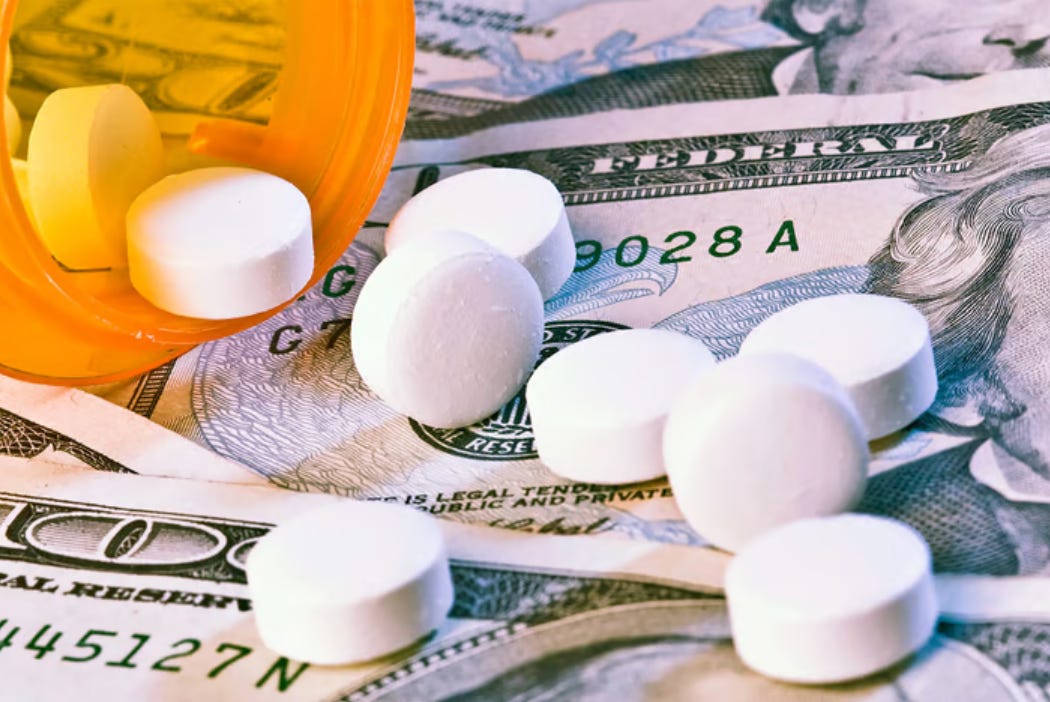Big Pharma’s Advertising Blitz: Billions on TV Ads, Medical Education, and Lobbying
Reporting by Trial Site News
| ROBERT W MALONE MD, MS SEP 1 |

TrialSite Staff | Making Biomedical Research Evidence Accessible to All
Sep. 1, 2025,
Pharmaceutical commercials are nearly impossible to avoid in the United States. On average, American TV viewers see as many as nine drug ads per day, totaling about 16 hours a year—far more time than most people spend with their primary-care physician. Only the U.S. and New Zealand allow direct-to-consumer (DTC) prescription drug ads, making American airwaves a primary battleground for pharma marketing.
This saturation is intentional: repetition prompts patients to “ask your doctor” about brand-name drugs, which can steer demand. Policymakers have taken note. A GAO analysis found that 2016–2018 Medicare drug spending on advertised products accounted for 58% of Parts B and D outlays, underscoring how ad campaigns align with where public dollars go per the United States Government Accountability Office (GAO) 2021 Report to Committee on the Judiciary, U.S. Senate.
Billions Poured into Consumer Advertising
Pharma’s consumer advertising budgets have soared over the past decade. In 2018, companies spent ~$3.73B just on national TV ads; Humira alone accounted for ~$375M in TV placements. By 2022, total DTC advertising across platforms reached ~$8.1B.
A landmark JAMA study shows overall medical marketing (to both consumers and professionals) rose from $17.7B (1997) to $29.9B (2016), with DTC the fastest-growing segment while professional-targeted marketing remained the largest share.
Figure (JAMA 2019): Total U.S. medical marketing climbed from $17.7B (1997) to $29.9B (2016); DTC rose about five-fold, while marketing to health professionals stayed the largest slice.
Proponents argue ads can educate, surface under-diagnosed conditions, and de-stigmatize illnesses. Critics as reported in a Reuters entry counter that saturation inflates demand for high-priced brands and can exaggerate benefits. Both are represented in the literature.
“Education” or Promotion? How Industry Shapes Medical Learning
While TV and online ads target the public, even more is spent influencing clinicians. In 2016, spending directed at health professionals was ~$20.3B—about two-thirds of total promotional spend that year. Tactics include detailing (sales-rep visits), free samples, journal ads, and sponsorship of continuing medical education (CME).
Historically as shown 15 years ago, industry has funded about half of CME costs, and older analyses suggest companies anticipated ~$3.56 in additional sales for every $1 invested in CME sponsorship—an ROI that explains persistent sponsorship despite guardrails. (These are historic estimates; current mixes vary.)
Evidence shows exposure to industry promotion shifts prescribing toward sponsor brands (often pricier than generics). GAO and congressional reviews also link advertised drugs to higher Medicare spending shares suggests the 2021 Senate GAO report.
Lobbying and Political Muscle
Pharma doesn’t just market to patients and prescribers—it also invests heavily in policy influence. In 2024, the pharmaceuticals/health products sector spent a record ~$388M lobbying the federal government—the most of any industry. Cumulatively, since 1998 the sector has spent >$6.3B on federal lobbying.
Trade association PhRMA routinely ranks among the top single spenders.
Soaring Drug Sales and Industry Power
These outlays have coincided with—and arguably helped fuel—surging drug expenditures in the U.S. Total prescription drug spending rose 16% from $520B (2016) to $603B (2021), according to HHS/ASPE. IQVIA-linked reporting pegs 2022 spending at >$633B (payer net). Growth stems less from a doubling of prescriptions than from higher per-prescription costs and uptake of specialty drugs.
It’s difficult to prove causation between marketing/lobbying and market “power,” but the correlations are strong: heavy advertising builds blockbuster brands; sustained professional promotion keeps them top-of-mind; and lobbying helps preserve favorable rules on pricing and DTC marketing. Analyses also show many leading firms spend more on sales & marketing than on R&D in a given year (e.g., 9 of 10 in one 2019 analysis; 7 of 10 during 2021), highlighting how promotion remains central to the business model.
Finally, context matters: the $29.9B total medical marketing (2016) rivaled the NIH’s annual budget and was about six times the FDA’s, underscoring the scale of private promotional spend relative to public science and oversight as reported to Congress.
Bottom line
Pharma’s DTC ad presence on U.S. television is pervasive, but it’s only the tip of a larger influence strategy that includes professional promotion and record lobbying. Over the past decade, spending across these channels has surged, as have drug revenues and policy influence. Whether one views DTC as education or enticement, the evidence shows the industry’s marketing-and-lobbying engine has helped shape what drugs Americans see, which ones they get prescribed, and how much we all pay for them. And given the troubles and scandals such as Vioxx, and OxyContin, are collective vigilance should be up.
Sources
TV ad exposure: Ventola 2011; Parekh 2018; DTC legality (US/NZ): Johns Hopkins / JAMA; GAO findings (58% Medicare spending on advertised drugs, 2016–2018): GAO-21-380; TV spend 2018 & Humira: FiercePharma; DTC total 2022 (~$8.1B): FiercePharma roundup; CME funding & ROI (historic): Brody 2009; commentary noting ~50% CME funding; Lobbying: OpenSecrets (2024 $388M; >$6.3B since 1998); Drug spending: HHS/ASPE (2016–2021 to $603B); NASEM/IQVIA reference (> $603B payer net / 2022 > $633B) and finally “Marketing vs. R&D” (many top firms): RAPS 2019; AHIP 2021.
